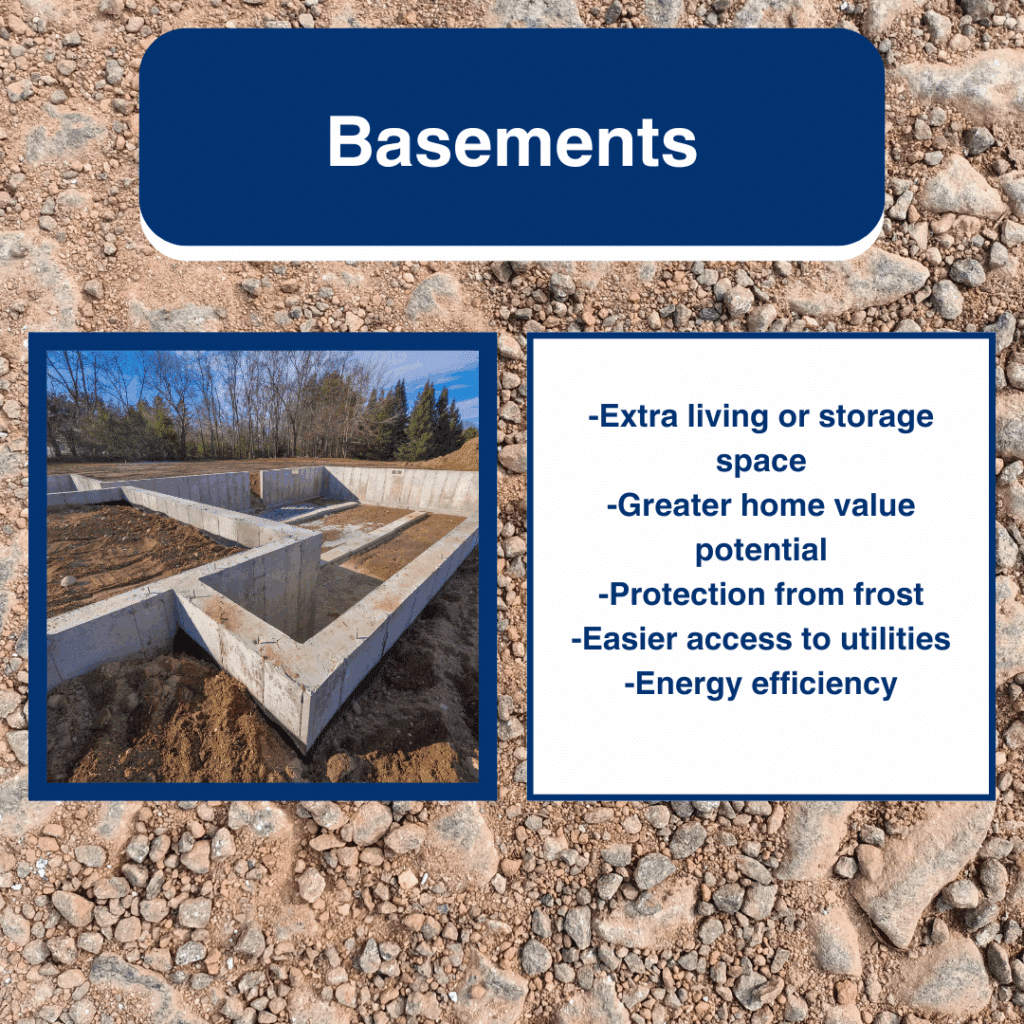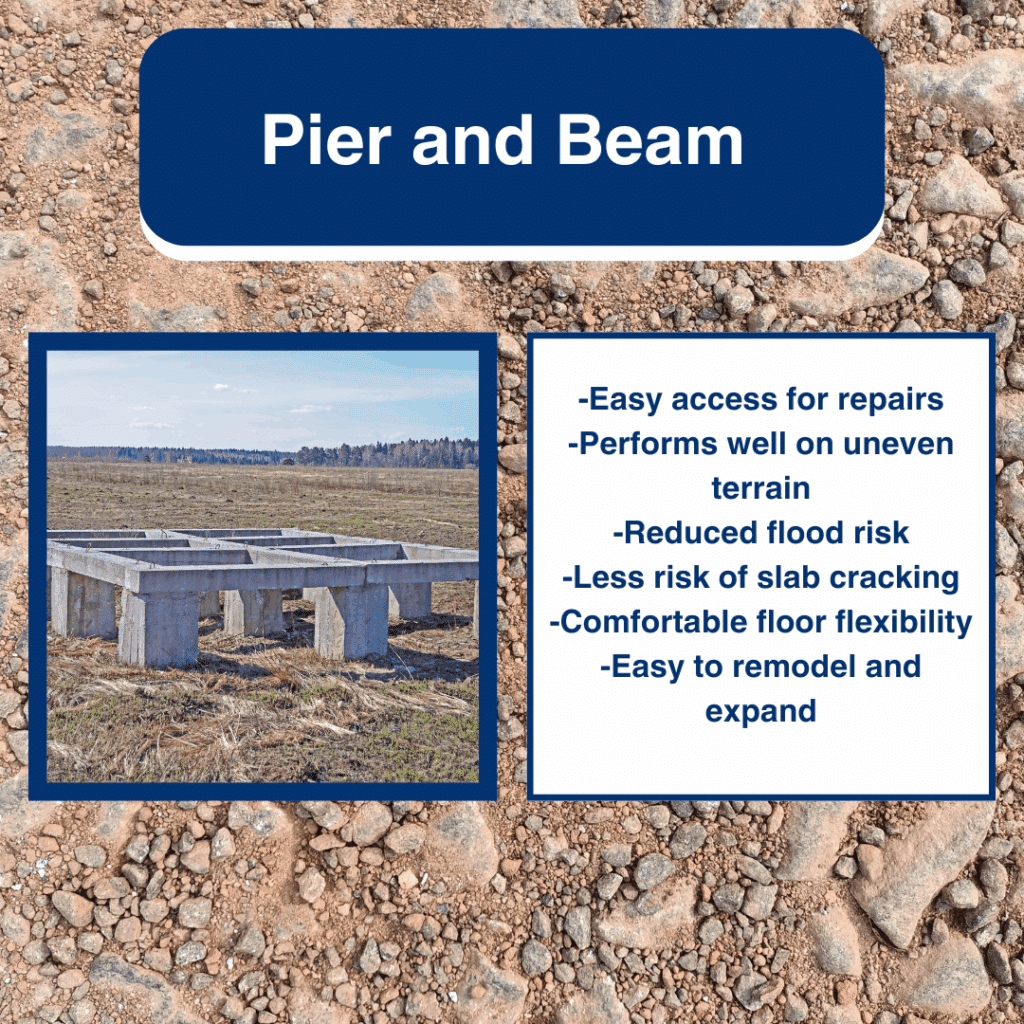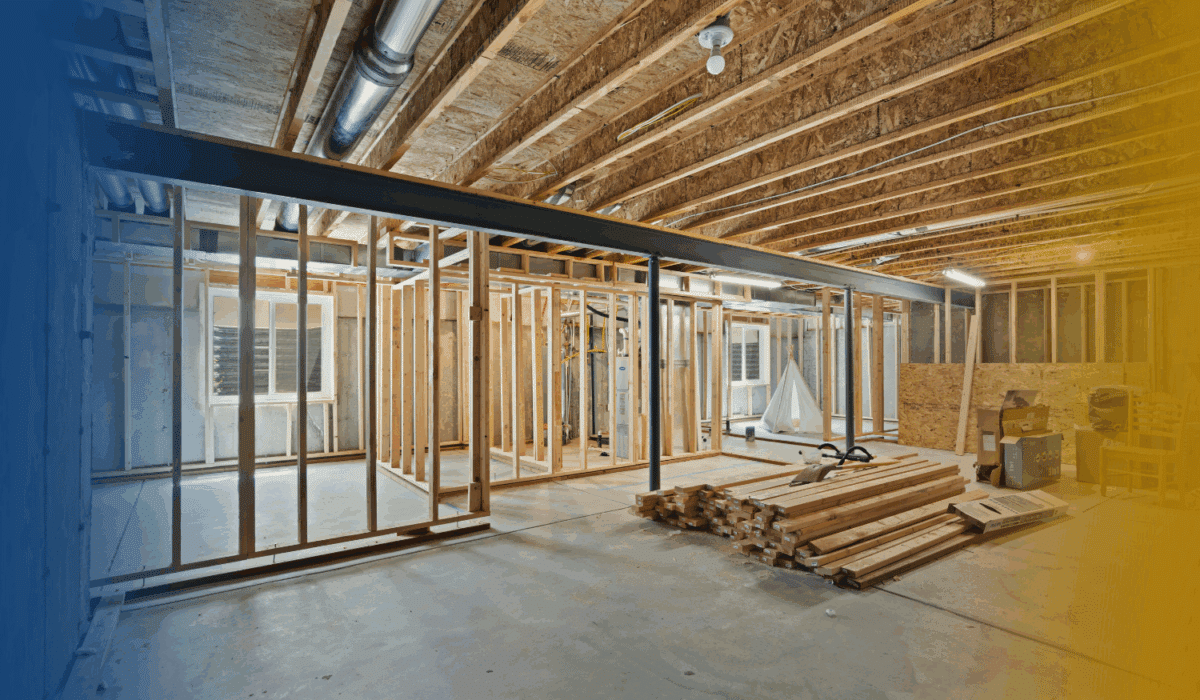When you’re looking for a new home, it’s easy to focus on the layout, finishes, and location. But there’s something just as important that’s often overlooked, the foundation. The type of foundation under a house can affect how it holds up over time, how much maintenance it needs, and how costly repairs might be. That’s why it’s essential to understand the different home foundation types before making a purchase.
A home’s foundation does much more than support the structure. It also protects against shifting ground, moisture, and long-term settling. If the foundation has problems, it can lead to uneven floors, cracked walls, or even major structural issues.
According to HomeAdvisor, the average cost to repair a foundation ranges from $2,220 to $8,112. That’s a big expense no one wants to face right after buying a home. Understanding the basics can help you avoid that risk.
What Foundation Type Depends On
Not every home uses the same types of foundation. The right type often depends on the soil, climate, and lot shape. For example, homes built on clay-heavy soil may need more flexibility, while those in flood-prone areas benefit from raised structures. Local building codes, weather patterns, and budget all play a part in deciding which foundation is used.
If you’re buying a home, especially an older one, knowing what kind of foundation it has can help you prepare for future upkeep. It also gives you a clearer idea of what to expect during a home inspection.
Slab Foundations: A Common Choice in Warmer Areas
Slab foundations are one of the most common home foundation types, especially in warmer states like Georgia. These foundations are made by pouring a thick layer of concrete directly onto the ground. There’s no space beneath the house, everything sits on this single slab.
Slabs are popular because they’re affordable, simple to build, and require less maintenance. They’re also less likely to attract pests since there’s no crawl space underneath. However, one downside is that all the plumbing and wiring is built into the slab, which makes repairs more complicated if something goes wrong. Slabs also don’t insulate well in colder climates.
On average, slab foundations cost around $6 to $14 per square foot. They work best on level lots with well-draining soil.

Crawl Spaces: Useful Access and Airflow
Crawl space foundations lift the home off the ground, leaving a small space underneath. This makes it easier to reach plumbing, electrical, or HVAC systems when repairs are needed. The space also helps with airflow, which can reduce moisture buildup.
That said, crawl spaces can become damp if not properly sealed or ventilated. Moisture can lead to mold, rot, or even pest problems if left unchecked. A well-maintained crawl space should stay dry and protected from outside air and water.
Crawl spaces generally cost between $5 and $30 per square foot. They’re a good option in areas with moderate rainfall and uneven ground. Homeowners should plan to check crawl spaces regularly to catch problems early.

Basements: Extra Space and Storage
Basement foundations add an entire floor beneath the main house. These spaces can be finished for extra living space or used for storage, laundry, or storm protection. In colder climates, basements help keep pipes from freezing and offer more insulation.
While basements add valuable square footage, they also cost more to build. The cost varies widely between $10 and $100 per square foot. If not sealed properly, they can leak or flood during heavy rain. Waterproofing and a good drainage system are essential for keeping basements dry.
Buyers looking at homes with basements should check for musty smells, dampness, or cracks in the walls. These can be signs of water issues that need attention.

Pier and Beam Foundations: Good for Slopes and Soft Soil
Pier and beam foundations raise the house above the ground using vertical piers and wooden beams. These systems are often found in older homes or those built on sloped lots or soft soil. This type of foundation allows the structure to “flex” slightly, which helps it adjust to shifting ground.
One advantage is easy access to utilities and a reduced risk of flooding. However, pier and beam foundations can shift or settle over time, especially if the soil underneath moves or erodes. This can lead to uneven floors or creaky spots.
Building a pier and beam system typically costs between $6 to $12 per square foot, depending on the home’s size. Regular inspections and occasional leveling are important to keep this foundation in good shape.

How Location Affects Your Foundation
The type of foundation you’ll most likely find depends on where the home is located. In the South and Southeast, slab and crawl space foundations are most common. They’re affordable and better suited to the warm climate and clay soil found in states like Georgia.
In the Northeast and Midwest, basements are more typical due to colder temperatures and deeper frost lines. Along coastlines and in flood-prone regions, pier and beam systems help lift homes above water threats.
Understanding the local norm helps you plan for upkeep and makes it easier to compare homes in different areas.
What to Watch for in Any Foundation
No matter the foundation type, certain warning signs should raise concern. Cracks in walls or floors, especially if they’re wide or getting worse, can point to settling issues. If doors or windows stick, or if the floors slope or bounce, it may signal foundation movement.
Other red flags include water pooling around the base of the home, musty smells in the basement or crawl space, or visible mold. These problems don’t always mean the foundation is failing, but they’re worth a closer look from a professional.
Simple Maintenance Can Make a Big Difference
A little prevention goes a long way. Homeowners should inspect their foundation each year for new cracks or changes in the structure. Keep gutters clean and make sure water drains away from the house. This helps prevent moisture from seeping into the foundation.
In crawl spaces or basements, using a dehumidifier can reduce moisture buildup. If your crawl space feels damp or drafty, encapsulating it with a vapor barrier can help protect against water and pests. Even small steps like regrading soil around your home can improve drainage and reduce risk.
When It’s Time to Call an Expert
Some signs are too serious to ignore. If you see major cracks, water intrusion, or parts of your home settling, it’s time to reach out for a professional inspection. You should also get a foundation check before buying an older home or if you plan to do major remodeling.
A thorough inspection gives you peace of mind and helps you plan for repairs, upgrades, or even potential cost negotiations before closing on a home.
Know Your Foundation, Protect Your Home
Foundations don’t have to be confusing or scary. By learning the basics of home foundation types, you’ll be better prepared to buy, maintain, or sell a home with confidence. It’s all about knowing what to look for and when to get help.
If you’re buying a home or just want to be sure your foundation is in good shape, Edifice Inspections is here to help. Our trained inspectors know what to look for, from visible cracks to hidden issues and we’ll give you honest, straightforward answers. Let’s make sure your next home starts off strong, from the ground up.


3 Comments
Comments are closed.